Hot shot trucking is a specialized freight service focused on speed, flexibility, and delivering time-critical hot shot loads. Hot shot trucking services involves hauling smaller, urgent shipments on short notice and delivering them directly to their destination as fast as possible.
WHAT IS HOT SHOT TRUCKING?
$987 B
11 B
8.5 M
84.5%
TALK TO AN EXPEDITOR NOW
Get a Quote in Minutes for Your Time-Critical Freight Needs
Typical Hot Shot Loads and Distances
Hot shot loads are generally sub-FTL in size – for example, a single pallet or crate, a piece of industrial equipment, a stack of construction materials, or a small vehicle. They are often small enough to fit in a cargo van, pickup-truck trailer, or straight truck. Many hot shot deliveries are regional, covering a few hundred miles so that a single driver can complete the trip quickly (often same-day or overnight). Some runs might be very short (just across town or to the next city) while others can span multiple states if the urgency is high.
Essentially, hot shot trucking is like a downsized, on-demand version of trucking that can go anywhere from local sites to cross-country, depending on the customer’s need. The key element is that speed and timing are critical – hot shot carriers prioritize immediate dispatch and direct delivery to meet tight deadlines.
Speed on Short Notice
Direct, Point-to-Point Delivery
Cost-Effective for Small Urgent Loads
Access to Remote Locations
Single-Vehicle Custody and High Visibility
Vehicles & Equipment
One of the distinguishing aspects of hot shot trucking is the range of smaller trucks and trailers used. Unlike traditional freight that might always use a 53-foot semi-trailer, hot shot carriers will match the vehicle to the size of the load for maximum efficiency and speed. Hot shot trucking isn’t defined by one type of truck – it’s defined by using the right truck for the job at hand, immediately.

Sprinter Vans
These are high-roof cargo vans (often Mercedes Sprinters or similar) that can carry small palletized loads or boxes. Sprinter vans are ideal for lightweight, low-volume shipments that need to go fast—up to about 3,000-4,000 lbs or a few standard pallets. They have enclosed cargo areas (typically around 12–14 feet long) which protect freight from weather. Sprinter vans are agile and quick to deploy, making them perfect for local or regional hot shot deliveries such as medical supplies, repair parts, or any load that can fit within their compact space. Because of their smaller size, they can zip through city traffic and access loading docks or even parking garages that larger trucks cannot.
Learn More About Sprinter Vans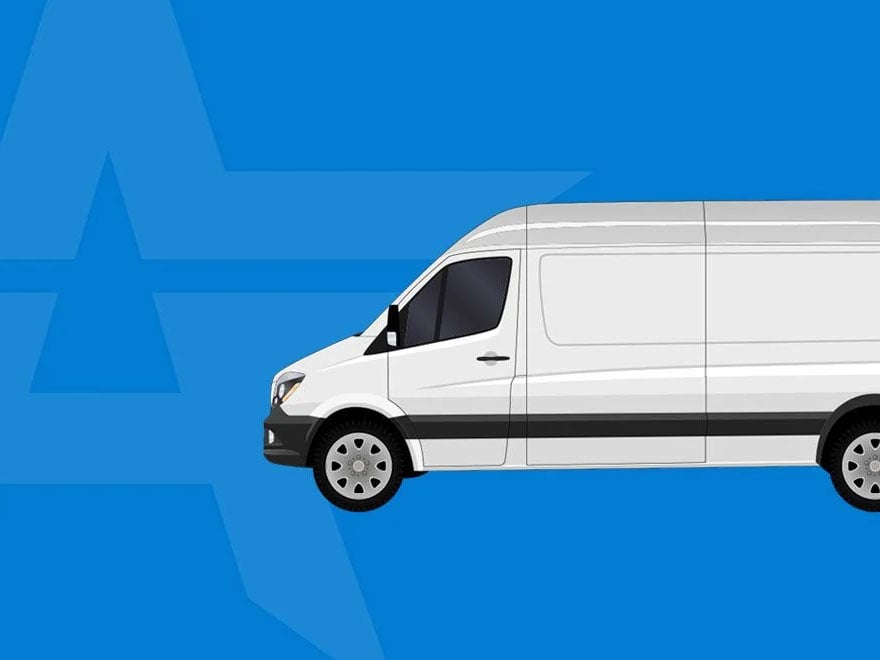
Box Trucks
A step up in size, box trucks are essentially small straight trucks with a cube-shaped cargo area. Common lengths range from 14 to 20 feet. These trucks can handle larger hot shot loads (perhaps 5,000–10,000 lbs, depending on the truck) and offer more space than a van while still being more nimble than a full-size trailer. Box trucks are enclosed, so they’re great for weather-sensitive freight or items that need secure containment. Many are equipped with liftgates or ramps, which is useful if the pickup or delivery locations don’t have a loading dock (for example, delivering heavy equipment to a small business or job site). Hot shot services use box trucks for things like a few oversized pallets, appliances, or machinery components that are too tall or heavy for a Sprinter van.
Learn More About Box Trucks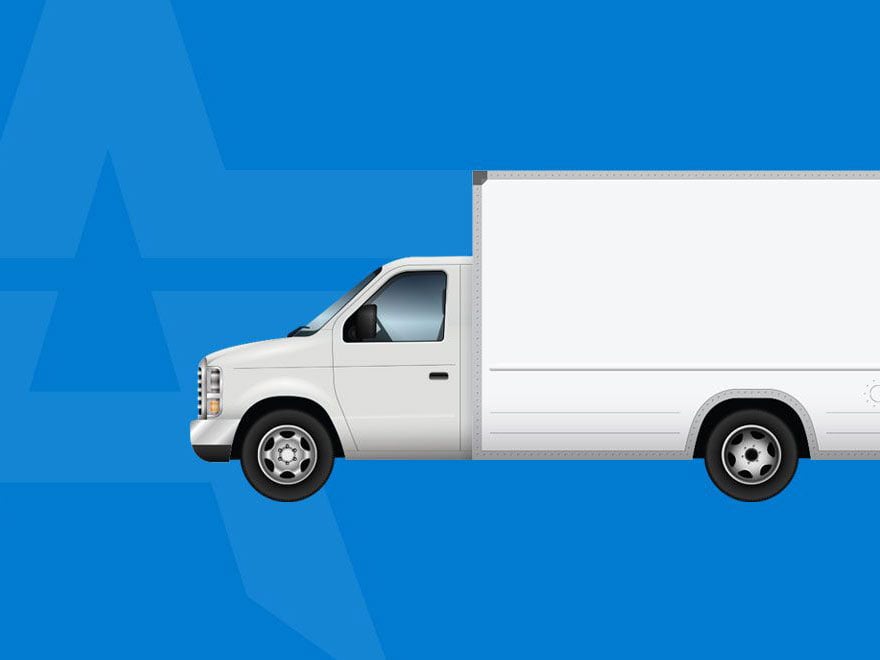
Large Straight Trucks
These are the bigger cousins in the straight truck category. A large straight truck might have a 24–26 foot cargo box, and sometimes a sleeper cab for the driver. These trucks can carry quite substantial loads (in the ballpark of 10,000–15,000+ lbs). In hot shot use, a straight truck is chosen when the shipment is urgent but physically larger or heavier than a small truck can handle, yet still doesn’t require a full 53′ trailer. Straight trucks have the advantage of longer range – they often come with dual driving teams or sleeper berths, meaning drivers can operate nearly non-stop for cross-country hot shot runs if needed. They are still more maneuverable than tractor-trailers and can often get into tighter urban areas or onto smaller roads. For example, an emergency generator or a set of oversized crates might go on a straight truck to speed directly to a destination, where using a semi might have required more planning or permits. Straight trucks used in hot shot service often also have liftgates for versatile loading/unloading.
Learn More About Large Straight Trucks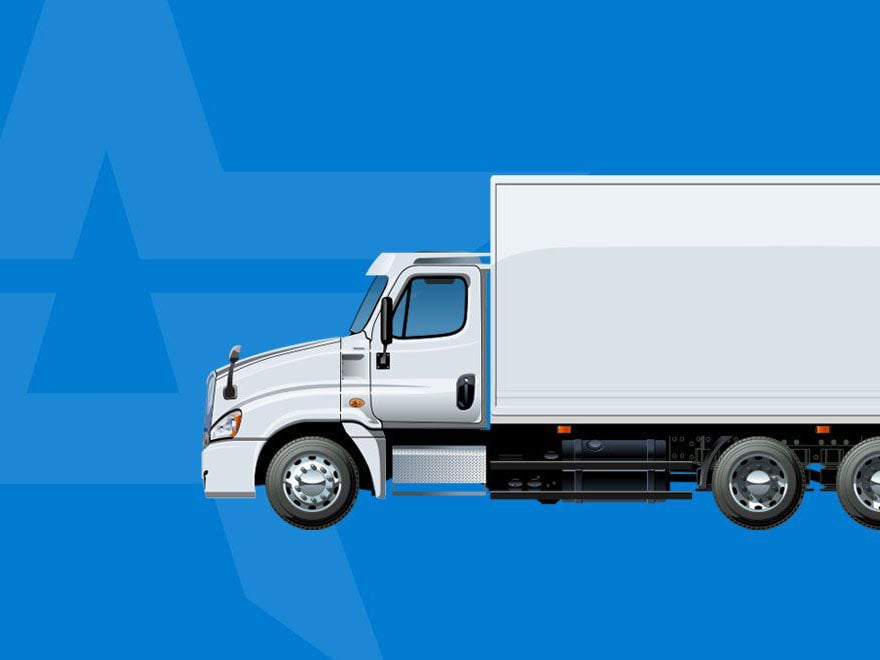
53 Ft Dry Vans
Wait – aren’t hot shots supposed to be small trucks? Yes, usually, but a hot shot doesn’t strictly exclude larger vehicles. If the urgent load is very large (say a full truckload that just has to get there ASAP) or extremely heavy, hot shot carriers can dispatch a standard dry van trailer pulled by a semi tractor. In essence, this becomes an expedited full truckload, but many hot shot trucking companies have access to 48′ or 53′ trailers for those critical big loads. A dry van is an enclosed, secure trailer suitable for any goods that need protection from weather or security during transit. Using a full flatbed or dry van in hot shot service usually means it’s a critical shipment for a single customer, just as smaller hot shots are, but now utilizing a Class 8 truck for capacity. For example, if a factory has a rush order of product that missed scheduled pickup, a dedicated 53′ hot shot truck might carry it nonstop to the customer. HotShotTrucking.com and similar providers pride themselves on having vehicle variety – including big rigs – ready to meet any urgent demand.
Learn More About 53 Ft Dry Vans
Full Flatbeds
Similar in size to the dry van trailers (often 48–53 feet long) but open-deck. Flatbeds are used in hot shot trucking to haul large, irregularly shaped, or heavy equipment that won’t fit in an enclosed trailer or that can be loaded/unloaded more easily from the side. They are great for machinery, construction steel, large crates, or vehicles. In hot shot scenarios, if a piece of heavy equipment like an excavator part or a transformer needs to be expedited, a flatbed with the right weight rating will be sent. Because flatbeds have no roof or sides, the driver will use tarps to cover the freight if weather exposure is a concern. Flatbeds provide versatility for oversized hot shot loads – for instance, moving a 40-foot long pipe urgently to a pipeline site or transporting a broken-down heavy truck chassis to a repair facility. The advantage is that cranes or forklifts can quickly load from any side, speeding up the process. The trade-off is that securement is critical: drivers use chains, binders, and corner protectors to ensure the load is safely tied down for the high-speed journey.
Learn More About Full Flatbed
How Hot Shot Trucking Works
Shipment Request & Quote
The process starts when a shipper has an urgent load. They contact a hot shot broker or carrier (often by phone or through an online platform) and provide the shipment details – what it is, weight and dimensions, pickup and delivery locations, and how fast it needs to arrive. Because hot shot trucking is on-demand, this could be any hour of the day or night. The carrier or broker quickly assesses the details and provides a quote (price and estimated transit time). Hot shot rates account for the expedited nature and dedicated service, so the quote is typically higher per mile than standard freight, but it’s the price of speed. Once the shipper agrees, the job is confirmed and moves to dispatch.
Dispatch & Driver Assignment
With the load confirmed, the hot shot provider identifies an available driver and suitable vehicle as close as possible to the pickup location. One of the advantages of hot shot services is that they often have a network of drivers positioned in various regions, ready to roll. If it’s a broker, they’ll reach out to one of their affiliated carriers or owner-operators; if it’s an asset-based hot shot company, they’ll assign one of their own drivers. The driver is dispatched immediately – often within minutes of confirmation – because these loads are time-critical. There’s no waiting to consolidate freight or optimize routes; it’s a direct run. The dispatch process also includes sending the shipper any driver details or contract paperwork electronically.
Pickup & Loading
The hot shot driver heads straight to the pickup point (which could be a warehouse, manufacturing plant, job site, or even an airport tarmac for an aircraft part). At pickup, the freight is loaded onto the truck or trailer. Shippers are generally responsible for basic preparation of the load: items should be crated or palletized if needed, and any special securement provisions (like protective crating, padding, or labeling) should be in place. Hot shot drivers come equipped with the necessary securement gear – things like ratchet straps, chains, binders, and tarps – to safely tie down the cargo.
Transit
Once loaded, the hot shot truck heads straight toward the delivery point without detours. Hot shot trucking is point-to-point, so the route is usually direct and often faster than standard transit times. Drivers plan efficient routes avoiding heavy traffic where possible, and they are conscious of the ticking clock. During transit, communication is key: shippers often receive real-time updates or have access to GPS tracking to monitor the load’s progress. Many hot shot services will give updates at pickup, at certain milestones (like “truck is 100 miles out”), and any time there’s an unexpected delay (for instance, a sudden road closure or weather issue).
Delivery
Upon arriving at the destination, the driver will unload the freight and deliver it directly to the consignee (the person or facility receiving the shipment). There’s no interim warehouse or sorting facility – it goes right to the customer. At delivery, it’s common for the receiver to inspect the goods and then sign a POD (Proof of Delivery), which is a document (now often electronic) confirming that the shipment was received in good condition at a certain time. That POD is crucial for the shipper and carrier as the completion of the job.
Who Uses Hot Shot Trucking?
Manufacturing & Industrial
Factories and industrial plants often operate on just-in-time schedules. When a production line is at risk of stopping due to a missing component or a machine breakdown, hot shot services can deliver critical machinery parts, replacement components, or repair tools in a hurry. This is often the difference between a brief hiccup and a costly multi-day shutdown. Manufacturers also use hot shots to send out custom-made parts or prototypes to customers on short notice.
Automotive & Aerospace
Auto parts suppliers and aerospace companies rely on hot shot trucking for emergency shipments of parts. In the automotive sector, a dealership might need a specific engine or transmission overnight to satisfy a customer or warranty repair. In aerospace, an aircraft-on-ground (AOG) situation (where a plane is grounded awaiting a part) can cost an airline huge sums, so a hot shot driver might carry a replacement avionics unit or turbine blade directly to an airport maintenance hangar. These industries value speed highly since downtime is so expensive.
Agriculture
Farms and agribusiness use hot shots especially during peak seasons. If a harvester breaks during harvest or a tractor needs a part in the middle of planting season, time is of the essence. Hot shot trucks can quickly deliver farm equipment parts, seed, fertilizer, or even livestock feed to rural farming areas. The ability to reach remote farms (and even drive onto farm roads) with needed supplies can save a crop or keep livestock operations running smoothly.
Events and Trade Shows
The events industry often has immovable deadlines – the show must go on! Whether it’s a trade show booth, stage equipment, lighting, or promotional materials, event coordinators use hot shot services to handle last-minute shipments or forgotten items. For example, if an important exhibit or a set of technical equipment gets left behind or delayed, a hot shot van might drive through the night to get it to the convention center before doors open. Hot shot trucking ensures that concerts, conferences, and trade shows have all their critical gear on time, even if something goes wrong in the logistics plan.
Humanitarian Aid & Utilities
In emergency situations like natural disasters or utility outages, hot shot trucks play a vital role in relief logistics. Government agencies, relief organizations, or utility companies will dispatch hot shots with generators, emergency medical supplies, water pumps, or utility repair parts to the affected area ASAP. These smaller trucks can often get into disaster zones more easily than big rigs, navigating damaged roads or detouring around infrastructure issues. For utilities, if a transformer blows or a water main part fails, a hot shot delivery of replacement parts or tools can help restore service faster for the community.
Oil & Gas/ Energy
Energy companies frequently need parts now. For example, if a drilling rig goes down due to a broken valve, a replacement part might be hot-shotted out to a remote oilfield to minimize downtime. Hot shot trucks haul pipes, valves, tools, and emergency equipment to oil rigs, natural gas sites, wind farms, and power plants to keep energy projects running. These locations are often remote or hard to reach, so having a smaller truck that can navigate rural roads is a big advantage.
Construction & Infrastructure
Construction firms use hot shot trucking to rush building materials, fixtures, or machinery to job sites to avoid project delays. If a crew is waiting on a specific piece of equipment (like a generator, a concrete saw, or steel beams) that wasn’t delivered or broke unexpectedly, a hot shot delivery ensures the project stays on schedule. Hot shot trucks can navigate construction zones and even deliver to tighter urban sites where big rigs struggle, bringing things like lumber, pipes, or heavy tools directly to the site.
Hot Shot Trucking Industry Terms
What is hot shot trucking?
Hot shot trucking is a type of expedited freight service that moves smaller, time-critical shipments using light- or medium-duty trucks and flatbed trailers. In most cases, a hot shot driver—often an independent owner-operator—uses a heavy-duty one-ton pickup paired with a trailer to deliver urgent freight directly to its destination. These dedicated runs typically serve a single customer and are designed for fast turnaround, often same-day or overnight for regional hauls. As a niche within the trucking industry, hot shot trucking specializes in on-demand less-than-truckload (LTL) freight that requires immediate transport. It’s also known as hot shot delivery or hot shot logistics, emphasizing its role in providing quick, dedicated trucking solutions for urgent shipments.
What is GCWR (Gross Combined Weight Rating)?
What is GVWR (Gross Vehicle Weight Rating)?
What are hot shot loads?
Hot shot loads are the shipments transported by hot shot truckers, typically smaller, time-sensitive freight that doesn’t require a full-size trailer and must be delivered quickly. They can include almost anything—such as pallets of industrial components, a single piece of machinery, construction materials, oilfield equipment, agricultural parts, or plumbing and HVAC supplies—so long as it can fit on a medium-duty truck or trailer. While most hot shot loads fall under less-than-truckload (LTL), they differ from standard LTL in that they are usually hauled directly from pickup to delivery without being consolidated with other freight, ensuring speed and dedicated service.
Is hot shot trucking the same as expedited freight?
Which industries use hot shot trucking services?
Hot shot trucking first emerged in the oil and gas industry, where companies needed a way to rush critical equipment and replacement parts to remote drilling sites to avoid costly downtime. While energy producers still rely heavily on these services, hot shot trucking has expanded into many other sectors. Construction companies use it to deliver building materials, tools, or machinery parts directly to job sites when deadlines can’t wait. Manufacturing and industrial plants depend on hot shots to ship urgent replacement parts or specialized tools that keep production lines running. In agriculture, farmers and equipment suppliers turn to hot shot drivers for time-sensitive deliveries of machinery or repair parts during planting and harvest seasons. Even industries such as automotive, utilities and infrastructure, and emergency response count on hot shot services to provide dedicated, fast transport for smaller, high-priority loads. In short, any business facing a critical-time shipment—where traditional freight schedules aren’t fast enough—can benefit from hot shot trucking to reduce downtime and keep operations on track.
What is UCR (Unified Carrier Registration)?
What are short-haul exemptions?
What is POD (Proof of Delivery)?
What kind of truck do I need for hot shot trucking?
The primary workhorse for hot shot trucking is a heavy-duty pickup truck, most often a one-ton dually with dual rear wheels for added stability and towing strength. Popular models include the Ford F-350/F-450, RAM 3500/4500, and Chevy/GMC 3500HD series. These trucks generally fall into the Class 3 to Class 5 medium-duty category, with GVWRs ranging from about 10,000 to 19,500 pounds. A Class 3 one-ton dually is especially favored for its balance of towing capacity (often 15,000+ lbs), broad availability, and maneuverability—making it ideal for pulling a variety of hot shot trailers on tight deadlines.
Related Blog Posts

Hot Shot Flatbed
In this article we delve into the intricacies of hot shot flatbed services, exploring everything from the types of vehicles used to the role of technology in tracking and managing shipments. Our goal is to provide you with a thorough understanding of this vital service, equipping you with the knowledge to make informed decisions that enhance your operations and drive your business forward. Need a reliable flatbed solution—fast? Whether you’re...
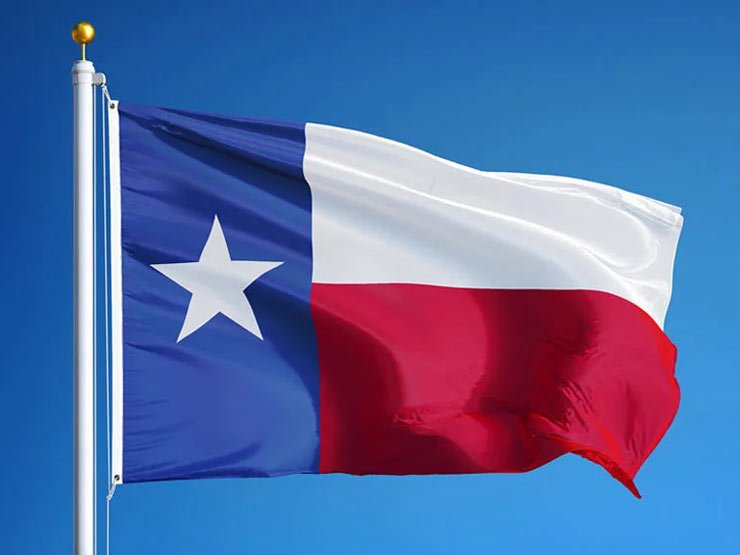
Texas Trucking Company
Hot shot trucking companies in Texas specialize in hauling smaller, time-sensitive loads—often for the energy sector, where timing is crucial. From providing hot shot delivery services to offering competitive freight quotes, these companies are integral to the world of Texas logistics. In addition to their speed and accessibility, hotshot trucking companies in Texas offer a cost-effective alternative to larger freight services for small to...

Shipping Kansas City to St Louis: Thinking Outside the Box
This is just one more example of how our team’s creative problem-solving and extensive experience can truly make a difference for our clients. We’ve built a strong relationship with one of our regular customers who specializes in creating custom displays for retail stores. As the holiday shopping season kicked into full gear, they found themselves under tight pressure to complete a project. It was early December, and with the holiday rush...
.jpg?width=960&length=960&name=shutterstock_6919525%20(1).jpg)
Hot Shot Trucking Texas
Hot shot trucking is not just a logistical solution. It is an economic imperative in Texas. Hot shot services are essential in supporting businesses across the state, from oil and gas operations to small local enterprises. Moreover, it plays a crucial role in disaster relief and emergency situations. By ensuring rapid delivery of essential supplies, hotshot trucking becomes a lifeline in times of crisis. This article aims to provide a...

Houston Hot Shot Delivery
Houston’s position as a national energy hub means urgent shipping needs are commonplace. When a critical piece of equipment fails in an oilfield or at a refinery, hot shot delivery services become a supply-chain lifeline for the Houston economy. Hot shot trucking is a niche but vital segment of the trucking industry, specializing in rapid, on-demand transport of smaller, time-sensitive freight loads. In a logistics hub like Houston hot shot...
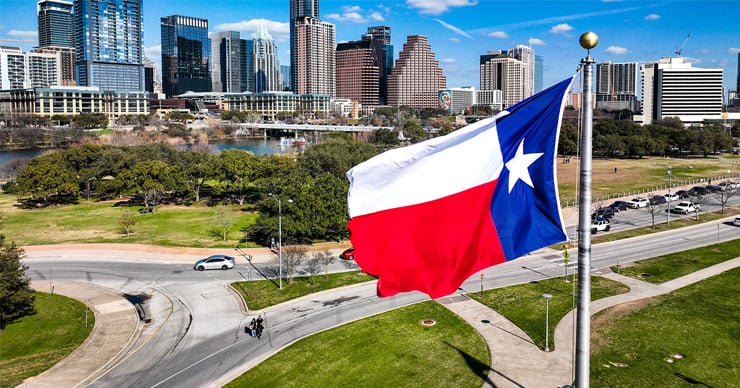
Trucking Companies in Texas
Texas boasts one of the largest and fastest-growing economies in the world, powered by industries from energy and manufacturing to technology and agriculture. In fact, if Texas were its own country it would rank around the eighth-largest globally by GDP. This economic might creates enormous demand for freight transportation. Thousands of trucking companies in Texas operate around the clock to keep factories running, store shelves stocked, and...

Hot Shot Trucking for the Construction Industry
In the U.S. construction industry, projects operate under tight schedules where any delay can cascade into cost overruns and idle crews. Construction sites often have crews waiting on critical materials or components – if those items don’t arrive on time, work might halt.

Hot Shot Trucking and Cross-Border Logistics in Texas
The Texas-Mexico border is the busiest trade gateway in North America. Every day, thousands of trucks shuttle across international bridges in Texas, carrying auto parts, aerospace components, electronics, and other high-value goods between the United States and Mexico.

How to Start a Hotshot Trucking Business
Today we're diving deep into how to get started in hotshot trucking. If you're looking for a way to enter the trucking industry with lower startup costs and more flexibility, hotshot trucking might be the perfect fit for you. We'll walk you through the key steps to launch your hotshot trucking business, from understanding what it is to finding your first loads. We’re an expedited freight company that works with hotshot truckers all across North...

Essential Tips for Successful Hot Shot Trucking
Running a successful hot shot trucking business requires a combination of effective strategies, attention to detail, and a commitment to customer satisfaction. Whether you're a new entrant or an experienced hot shot trucker, adopting essential tips can help you navigate the industry and increase your chances of success. In this blog post, we will provide practical advice and strategies for running a thriving hot shot trucking business, covering...

The Advantages of Hot Shot Trucking for Small Businesses
In the world of logistics, small businesses often face unique challenges when it comes to shipping their products efficiently and cost-effectively. This is where hot shot trucking can be a game-changer. Hot shot trucking offers a range of advantages that can significantly benefit small businesses, enabling them to compete in the marketplace and meet customer demands. In this blog post, we will explore the advantages of hot shot trucking for...
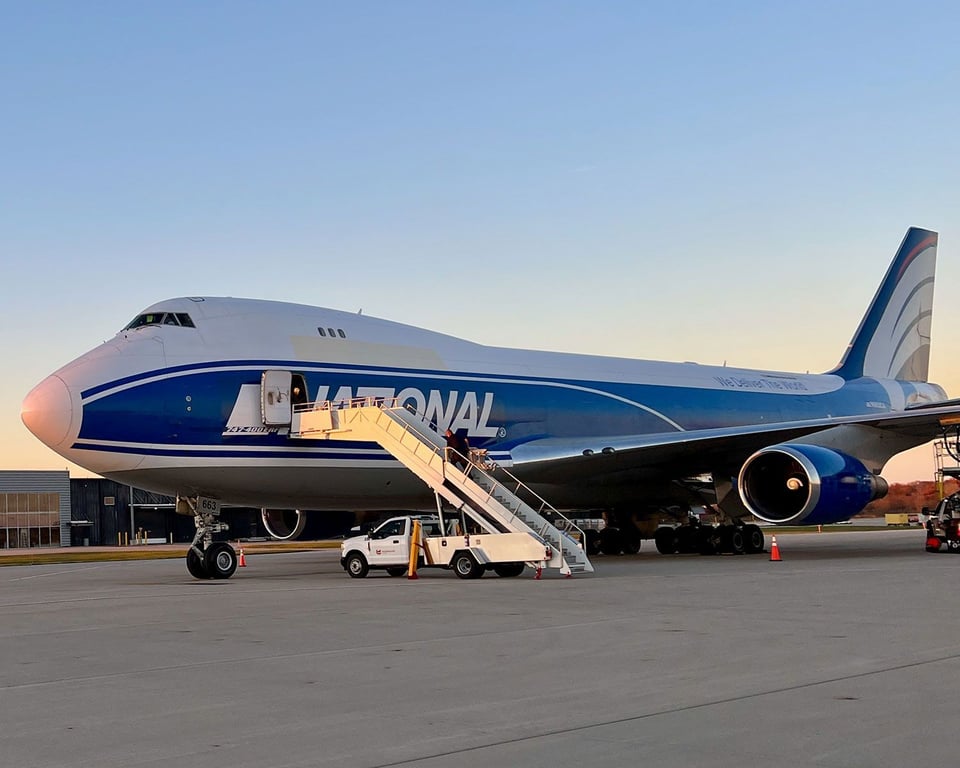
747 Freighter Air Charter to Hawaii
When it comes to providing air cargo capabilities, there is no aircraft in the world that compares with the Boeing 747 series of freighters. All three 747-400F, 747-400ERF and 747-8F freighter models in service today, are unmatched in carrying capacity, cargo handling, global reach, speed and versatility. An aviation icon born in 1968, the 747 is instantly recognizable by its large upper deck “hump”, four engines and six-story high vertical...
WHAT IS HOT SHOT TRUCKING? AKA HOTSHOT TRUCKING
Modern business is all about strict timelines. Whether your field is manufacturing, extraction, retail, or research and development, your operations are bound to rely on activities that operate in tandem. The most minor of supply shortages can throw these activities off, potentially costing you thousands of dollars just for a few hours' delay. Success thus hinges on your ability to right the ship as quickly as possible after a supply shortage arises.
Industries We Serve
Modern day hot shot trucking provides the speed and exclusivity you need to meet the most demanding and time-sensitive shipping requirements. We use every resource, avenue, and channel available to ship your freight by ground or air. Designed specifically to address supply and distribution problems that arise without warning, hotshot trucking tactics involve coordinating a network of carriers in a variety of locations. By calling on the vehicles closest to your supply or distribution points, hotshot brokers can fill any sudden gaps in your supply network almost as soon as they happen. This minimizes the disruption to your business and allows you to quickly return to ordinary operations, weathering the storm without skipping a beat.
Automotive
The automotive supply chain already has significant challenges. Don’t let malfunctioning equipment stop the production line. Step on the gas with HotShotTrucking.com’s suite of services that will get you back in the fast lane. With HotShotTrucking.com, companies are devising shipping strategies to swiftly deliver critical parts and equipment — whether it's ground expedite service with sprinter vans, box trucks and 53-foot tractor trailers or air freight and air cargo.
Aviation & Aerospace
Every moment a commercial airliner sits on the ground, it costs an airline money. Expedited freight services by HotShotTrucking.com can get you back in the air with prompt delivery of parts and equipment throughout North America. We are equipped with the expertise to navigate the complexities of shipping jet engines and other types of loads, and our network of hot shot drivers has extensive experience transporting aviation assets.
Construction
One shipping delay can snowball and cause delays throughout your entire project. You need an experienced 3PL provider who understands the construction industry and has the logistical reach to deliver your freight on time, anywhere. That 3PL partner is HotShotTrucking.com. Whether in the air or on the ground via truck and trailer, we can connect companies to expedited freight services for the prompt delivery of parts and equipment throughout North America.
Mining & Metals
From cranes to chemicals to excavators to conveyor belts, HotShotTrucking.com has the experience and industry know-how required for shipping sensitive, oversized, and hazardous equipment. Third-party hot shot trucking and logistics providers such as HotShotTrucking.com specialize in devising and implementing innovative shipping solutions, ensuring mines can swiftly return to operation. We’ll pick up your shipment, deliver it to the airport and receive it at the other end – providing hand-carried service as necessary or required.
Manufacturing
Every moment a manufacturing facility or factory sits idle costs a company money because of the high costs involved. With many manufacturers building to only just-in-time production rates, any disruption threatens parts and vehicle inventories. This is where the speed and expertise of freight services from HotShotTrucking.com can make a difference throughout the entire manufacturing supply chain. We do all the logistical legwork to find the optimal solution for your job, whether it's an exclusive air charter or expedited ground shipping.
Telecommunications
From servers to cell towers, information, voice, and data must flow to keep businesses, production, and the public online and connected. When equipment goes dark, depend on HotShotTrucking.com to get your systems flashing green again. This is where the speed and experience of trucking and freight services from HotShotTrucking.com can help. Our hot shot truck network excels at the prompt delivery of parts and equipment throughout North America.
Oil & Gas
The oil and gas industry faces challenging conditions in offshore and onshore oil rigs, often in remote locations with limited infrastructure. Don’t let oil pumps or pipelines sit idle waiting for equipment. By having the right plans, parts, people, and logistics partner like HotShotTrucking.com, you can effectively mitigate plant or pump downtime, unscheduled disruptions, and equipment failures.
Cost of Urgent Shipping
Which of our specialized shipping services best fits your needs?
Blog and Resource Center
How AirFreight.com Solved a PGA Tour Shipping Emergency
Learn how AirFreight.com located a lost shipment and helped save the PGA Golf Tour.
How AirFreight.com Saved The Farm By Solving A Major Shipping Delay
Learn how we saved a Montana-based artisanal farm thousands of dollars by expediting a shipment of perishable goods.
Expedited Shipping Vendor Comparison
We’ve done the research for you. This vendor comparison sheet breaks down how AirFreight.com stacks up against the competition.

talk to an expeditor now
Get a Quote in Minutes for Your Time-Critical Freight Needs
GET A QUOTE



.jpg?width=1280&height=720&name=maxresdefault%20(4).jpg)